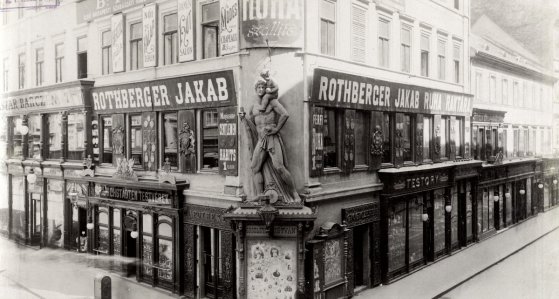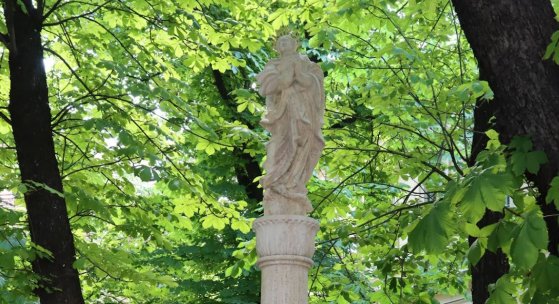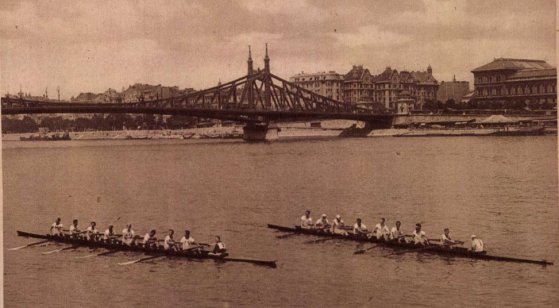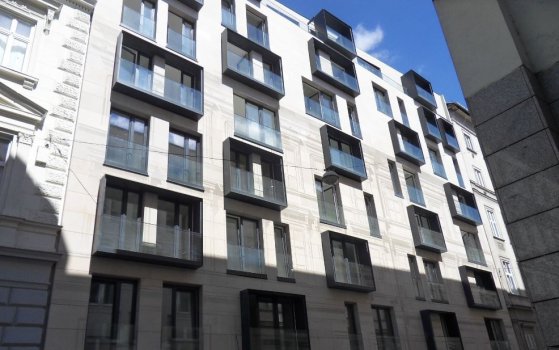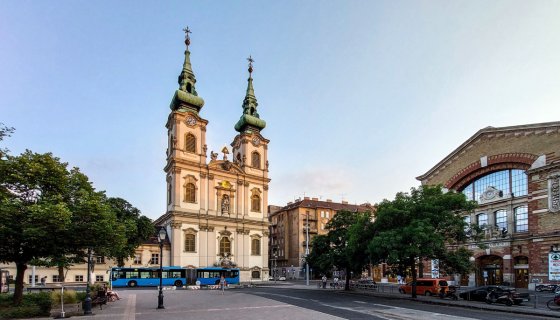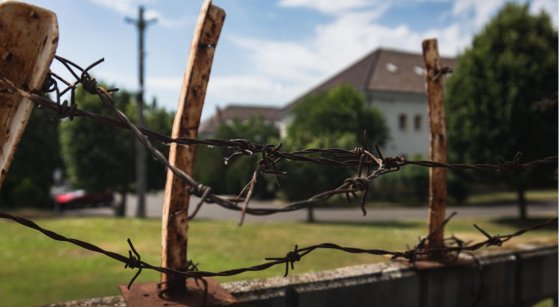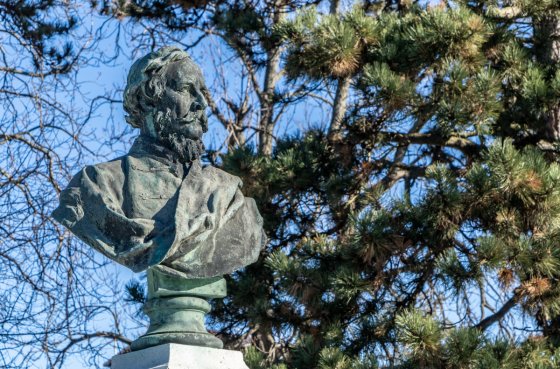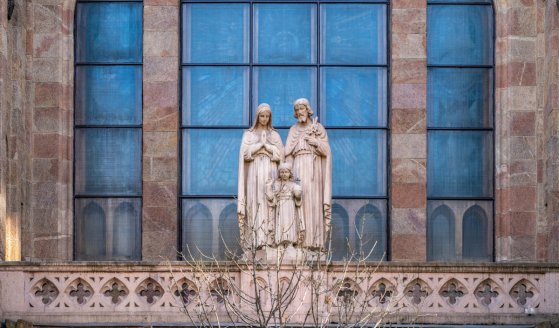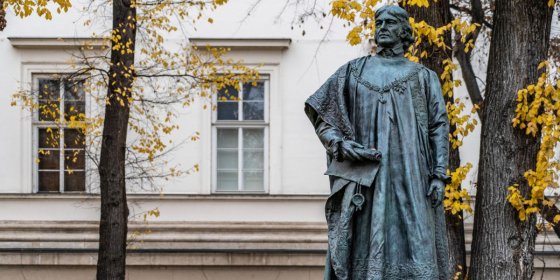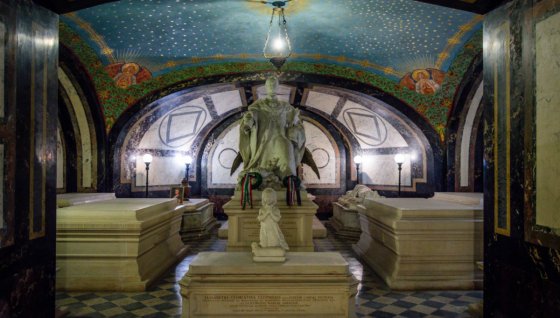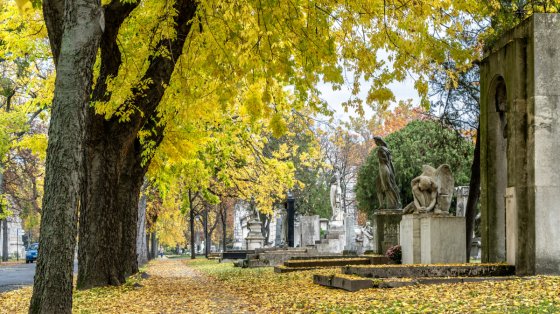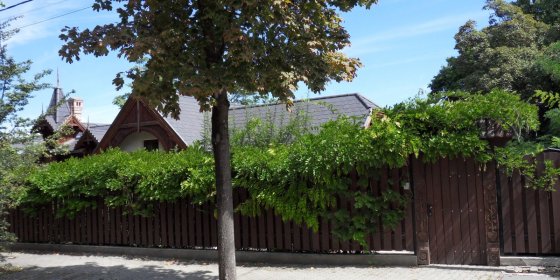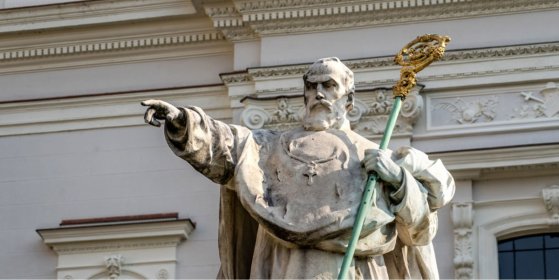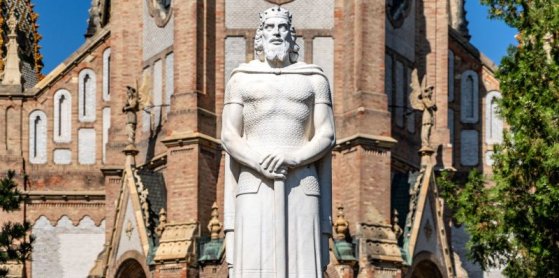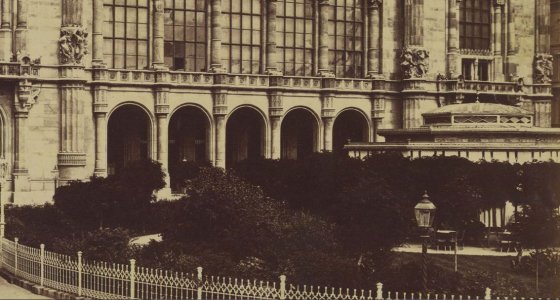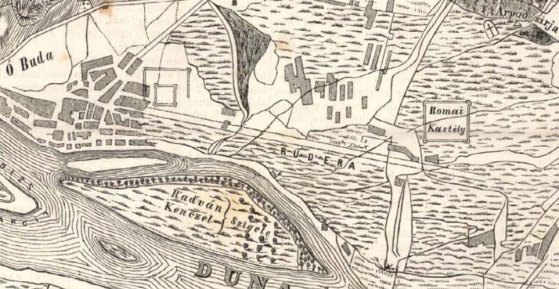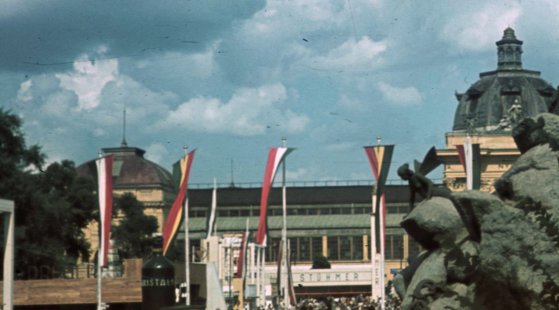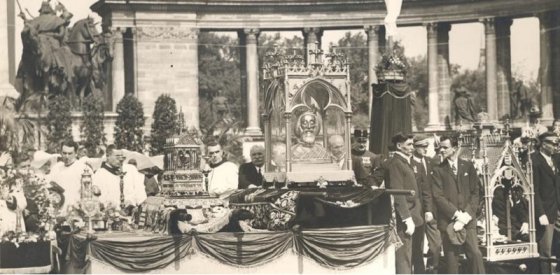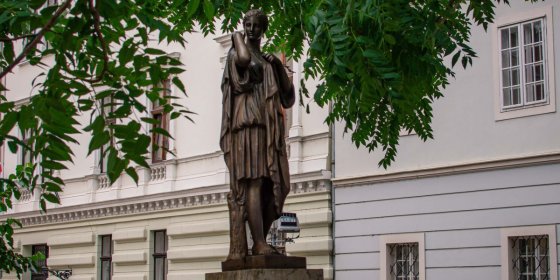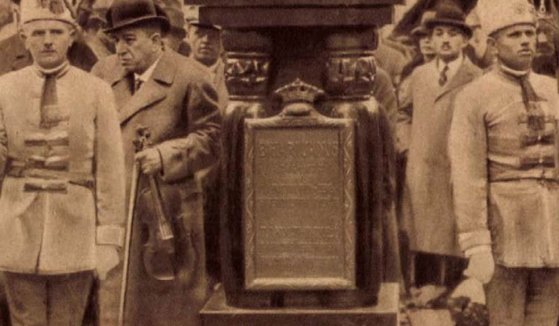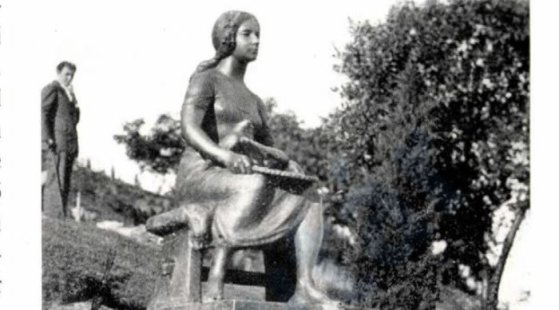 The „intertwined history” of the bridges and the city of Budapest
Which ideas and events have shaped the fate of bridges of Budapest and the cityscape? Alongside many other interesting facts, this question is also answered this newly published book by the Budapest City Archives, which introduces the history of bridges in Budapest.
The „intertwined history” of the bridges and the city of Budapest
Which ideas and events have shaped the fate of bridges of Budapest and the cityscape? Alongside many other interesting facts, this question is also answered this newly published book by the Budapest City Archives, which introduces the history of bridges in Budapest.
Gergely Flier
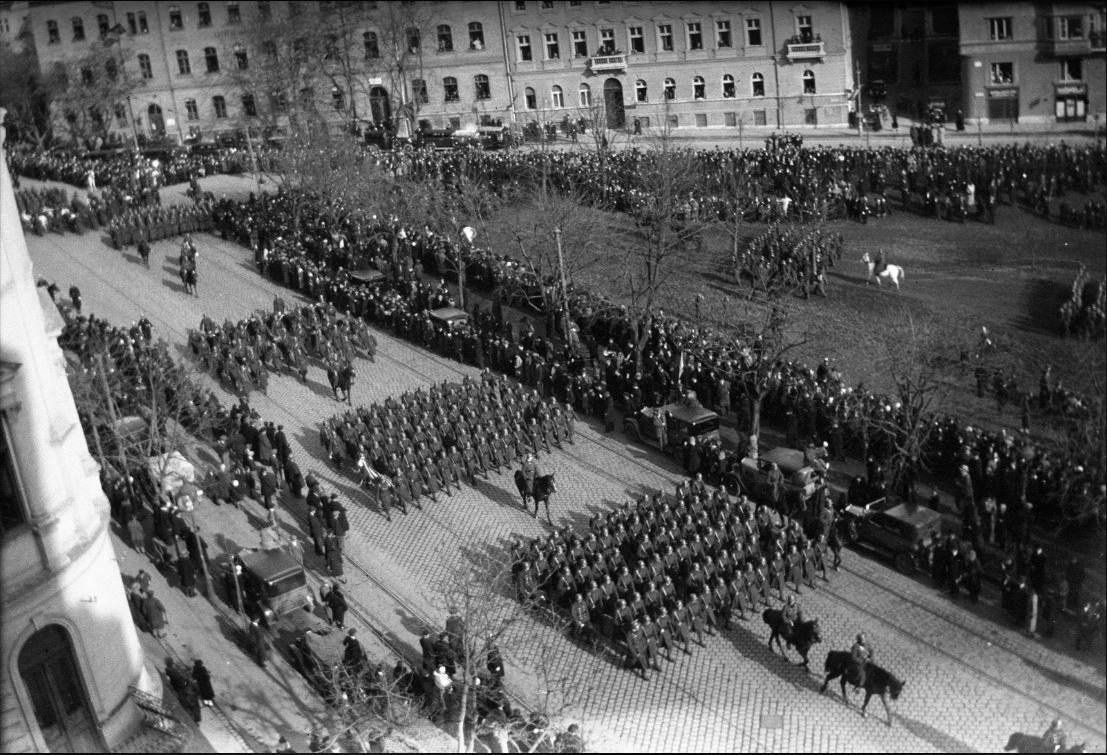 Trianon also dealt a huge blow to the Hungarian national defense - The law restricting the country's military power came into force in 1922
Trianon also dealt a huge blow to the Hungarian national defense - The law restricting the country's military power came into force in 1922
June 4, 2022 at 12:00 PM
The Trianon peace treaty brought ruthless provisions to Hungary from a military point of view as well: the number of the army was maximized in an extremely small number of 35,000, the number of weapons was determined, and the Hungarian military industry was essentially abolished. With the restrictive provisions, the victorious powers wanted to ensure the military superiority of the surrounding countries, and on the other hand, they wanted to ensure that Hungary did not have the opportunity to question the borders drawn in 1920. The Military Provisions Act came into force in 1922, and we commemorate that a hundred years later.
The Nagy Kristóf House was a real business centre in contemporary Pest
May 26, 2022 at 9:00 AM
The former house at 6 Váci Street is named after the huge statue of St. Christopher of the pharmacy in it, after which the area in front of the building was called Kristóf Square. However, according to the plans of József Hild, the building, which was expanded to two and then three floors, housed several other shops in addition to the pharmacy, including the fashion store of the clothing retailer Jakab Rothberger, which also won the title of imperial and royal court supplier.
The restored Immaculata statue in Krisztinaváros is back to its place - its original was erected 320 years ago
May 6, 2022 at 8:00 PM
Another sculpture with a long history was renewed in the capital: the Immaculata statue in Krisztinaváros, erected 320 years ago in 1702 - the oldest public sculpture in Budapest - has been replaced by a copy since 1928, and in the meantime this work has also needed to be restored. The work was carried out at the Department of Restoration of the Hungarian University of Fine Arts recently, and yesterday the sculpture was placed at the Krisztina Square erection site.
István Széchenyi introduced rowing to the Hungarian capital almost 200 years ago
August 7, 2021 at 10:00 AM
At the Tokyo Olympics, Hungarians once again performed very well in water sports, in keeping with tradition. Rowing became established in Hungary thanks to István Széchenyi, who became acquainted with this sport in England. At the end of the 19th century, competitions were held regularly on the Budapest section of the Danube. Moreover, every year since 1925, university sports clubs have compared their skills on the Danube between Margit Island and the main entrance of the University of Technology, thanks to which countless photographs have survived in which we can see the old pre-war city behind the rowers.
New residential building completed on Erkel Street 5 years after the demolition of the classicist building
August 3, 2021 at 12:00 PM
Although during urban development it is often the case that some of the old buildings are demolished and replaced by new ones, it is very painful to lose a value that is unique or rare and to replace it with a building which has not got the same values, in addition, the more or less uniform street view is sacrificed as well. The new residential building was completed five years after the demolition of the classicist residential building at 18 Erkel Street in the 9th district. Pestbuda now shows the readers what it turned out to be.
The sanctuary of the St. Anne's Church in Batthyány Square was built 275 years ago
July 24, 2021 at 9:00 AM
One of the most characteristic buildings on the banks of the Danube in Buda is the St. Anne's Church in Watertown (Víziváros). The building on Batthyány Square in the 1st District also stands out among the Baroque architectural monuments of the capital. The history of the church dates back to the 18th century, its foundation stone was laid in 1740 and then it was built for a long time. Its sanctuary was built 275 years ago, in 1746, and it was used as a church until the building was completed. On the anniversary, Pestbuda visited the patinated church building of Buda.
Thirty years ago, the Soviet army withdrew from Hungary - What happened to the former barracks in Budapest?
July 9, 2021 at 11:00 AM
Thirty years ago, in the summer of 1991, the Soviet army left Hungary permanently. The Red Army, which was temporarily stationed here at the time, but had been in the country for almost five decades, also owned a number of properties in Budapest during this time, most of which were in a very dilapidated condition at the time of the return. Since then, three decades have passed, the former military facilities have been renovated in several places and utilized very well. On the anniversary, we will visit some of them.
The man who introduced compulsory education – 150-year anniversary on József Eötvös's death
February 2, 2021 at 2:00 PM
His statue stands on the Kossuth Monument next to the Parliament among the greatest figures of the Reform Period. His bronze statue rises proudly above a square that bears his name in the Budapest city centre. A respected secondary school was named in his honour, and the house named after his novel The Carthusian still stands on Svábhegy. He was also the politician to introduce compulsory education. The writer, politician and statesman, József Eötvös died 150 years ago. A leading figure of the Reform Period and subsequent decades, his policies are as much part of his oeuvre as his novels. Visit the sites that memorialise the nobleman in Budapest.
Irredentist statues erected on Szabadság Square 100 years ago
January 18, 2021 at 11:00 AM
The group of irredentist sculptures erected in response to the Trianon Peace Treaty was unveiled a hundred years ago, on 16 January 1921. One of the first spectacular responses to the treaty that ended World War I was welcomed by a crowd of 50.000. The sculptors. Zsigmond Kisfaludi Strobl, István Szentgyörgyi, János Pásztor and Ferenc Sidló cast the statues to depict everything that the territories lost only half a year earlier had meant in Hungarian history.
Churches of the Holy Family call the faithful in both Buda and Pest
January 13, 2021 at 1:00 PM
On 27 December last year, Pope Francis announced in Rome that the Catholic Church will celebrate a special year dedicated to family love, beginning on 19 March 2021. Discussions about the concept of a family have recently brought the issue to the front of public debates, making the Year "Amoris Laetitia Family" a particularly well-timed initiative in the country. Currently, three churches in Budapest are dedicated to the Holy Family, reminding the faithful that family appeared as a fundamental value and a natural element of human existence at the beginning of Christianity. In preparation for the year of the family, Pestbuda visited the Churches of the Holy Family in Zugliget and Terézváros.
The father of the Hungarian National Museum, Count Ferenc Széchenyi, died 200 years ago
December 21, 2020 at 9:00 AM
Among the noble families of Hungary, the Széchenyi's particularly contributed to the growth of Budapest. Works associated with István Széchenyi, the Chain Bridge and the building of the Hungarian Academy of Sciences are emblematic sites of the city, and his father, Ferenc Széchényi, can be tied to important institutions such as the National Széchényi Library and the Hungarian National Museum. The two respected institutions, which were one at the time, were founded in 1802 by Count Ferenc Széchényi as the third national collection in Europe. Today is the 200th anniversary of his death.
The most Hungarian Habsburg rests in Buda Castle – A visit to the Palatine Crypt
November 14, 2020 at 9:00 AM
A lesser-known segment of the vast Royal Palace of Buda Castle has housed the final resting place of the Palatine-branch of the House of Habsburg since the Hungarian National Awakening and the Reform Period. The crypt of the Habsburg palatines has remained almost unchanged since the 19h century. Few know that a Habsburg was buried in the crypt in the 2010s. Pestbuda visited the stunning site as part of a tour organised by the National Hauszmann Program before the restrictions announced on 10 November, limiting events entered into force. Join us on a visit to the crypt of the Royal Palace of Buda Castle.
Buried in Budapest – Great Hungarian figures born beyond the modern borders of Hungary lie in the Fiumei Road Cemetery
November 2, 2020 at 9:00 AM
The number of those born beyond Hungary's present borders but buried in Budapest is almost unfathomable. Among them several well-known and respected figures. The reason is obvious, talented and ambitious youths gravitated to Budapest from all over the country before 1920, just as they do today. Many of them completed their life's work in Budapest. Walking through the Fiumei Road Cemetery one quickly realises how many great Hungarian figures were born outside of the nation's post-Trianon borders. The compilation honours their memory.
A Székely gate on Sas Hill
October 15, 2020 at 12:00 PM
István Benedek, the renowned 20th-century writer, doctor, psychiatrist and public figure was the son of the great Székely storyteller Elek Benedek, and both of them remain household names in many Hungarian families to the present day. Beyond his books, István Benedek is memorialised by a Székely gate that he carves himself, and erected before the villa he lived in from 1957. Interestingly, the house itself was built by the well-known bookbinder Nándor Gottermayer.
Péter Pázmány never visited Budapest – Born 450 years ago the prelate remains a symbol of Hungarian unity
October 4, 2020 at 9:00 AM
When in 1635 Péter Pázmány founded the first University in Hungary – the successor of which operates in Budapest today – Buda and Pest were occupied by the Ottomans. Thus, one of the greatest figures of Hungarian baroque literature, and a leading figure of Hungarian Catholicism, never visited what is today Budapest. Nevertheless, two universities in the capital vie to preserve his memory. Several statues and other works of art depict him around the city, emphasising how the life's work of this Hungarian prelate is unavoidable in public life, education, culture and religion.
Kőbánya pays its respects to King Saint Ladislaus
September 27, 2020 at 10:00 AM
Before the stunning church planned by Ödön Lechner in Kőbánya stands a statue of King Saint Ladislaus. The district also houses not only a church, but a respected secondary school, a primary school and a square that bare the name of the saint king. As the cult of Saint Ladislaus is uniquely strong in this part of the city, the district was gifted the statue of saint in 1940, when the nation commemorated the 900th anniversary of his birth. The statue by Károly Antal, was erected before the church as the public sculpture of the king to be placed in Budapest.
Church on Szabadság tér constructed for refugees from territories lost after Trianon
September 22, 2020 at 2:00 PM
A church can be found under 2 Szabadság Square, on the ground floor of a six-storey residential building. Wedged between two other blocks of flats, those walking along the pavement may not even realise that they had walked by a church. Few know that it was built by Hungarian refugees that moved to Hungary from areas annexed by neighbouring countries after the Treaty of Trianon that ended World War I.
Intervention from Ferenc Deák may have allowed the Hangli Kiosk to open on the Danube promenade
September 15, 2020 at 9:00 AM
The Danube Promenade was once lined with several almost legendary buildings. These included the Redoute, the Queen of England Hotel, the Lloyd Palace and the Ritz Hotel. Alongside the grand palaces stood a small building, the Hangli Kiosk. The restaurant was named after its owner, Mark Hangl, an Austrian-born restaurant owner who came to Budapest at a young age, and who was helped by Ferenc Deák himself, in opening the kiosk. The Hangl Kiosk stood in front of the Pest Vigadó from 1870 until it was lost in the end days of the Second World War, alongside so many other beauties.
Frigyes Schulek designed a church to stand above Prince Árpád's final resting place
September 9, 2020 at 9:00 AM
Following the Hungarian National millennium of 1896, the country celebrated another millennium in 1907: the one-thousand-year anniversary of the death of Grand Prince Árpád, the ruler who led the conquest of the Carpathian Basin. Furthermore, the current ruler, Franz Joseph, also celebrated the 40th anniversary of his rule in the same year. A law passed to commemorate this double millennium stated that the Church built by King Saint Stephen, which had once stood on the outskirts of Óbuda where Prince Árpád was believed to be buried, should be rebuilt. Frigyes Schulek was commissioned to design the building.
Red, yellow, green – The colours of Budapest
August 27, 2020 at 5:00 PM
Ninety years ago, on 20 August 1930, new flags decorated the streets of Budapest. The red-yellow-green tricolour replaced the red-yellow-blue colours in use since 1873. Ten years after Trianon, Act XVIII of 1930 detailed changes to Budapest's flag and coat of arms. One of the reasons behind the change was that the colours of the old Budapest flag and the Romanian flag were the same, but adding the traditional colour of green, Buda to the symbols of the capital was also an important factor.
A holiday missed – The colourful history of Processions of the Holy Right
August 20, 2020 at 2:00 PM
The Procession of the Holy Right, held on 20 August, is the most important religious event in Hungary, and St. Stephen's Day is the most important holiday for all Hungarians. Sadly, this year they will be no fireworks or processions. In an emergency, it is worth looking back into the past, as many interesting and informative events have taken place during the long and tumultuous history of the Holy Right and its processions. The relic arrived in Buda in 1771 courtesy of Maria Theresa, and the first procession took place in 1818 in Buda Castle. In the 19th century, however, the holiday increasingly moved to the Pest side and was already accompanied by national interest.
A wandering Greek goddess that found a home next to Magdolna Tower – The Hebe Fountain has stood at several points of Buda Castle
August 17, 2020 at 9:00 AM
The Hebe Fountain in Buda Castle, also known as the Artemis Fountain, now stands in an intimate little unnamed square at the foot of the Magdolna Tower, at the northern end of Úri Street. It seems that this 19th century well statue, previously erected in two other places in the Castle, has found its final home. For various reasons, the Greek goddess has been moved from two other locations before. The nomadic statue also has two names: after its inauguration, it was identified from Greek mythology as the figure of Hebe, when in fact, it was a copy of a statue of Artemis in Paris.
Breathtaking panorama for high-altitude bathing – The forgotten memories of swimming on Svábhegy
August 11, 2020 at 1:00 PM
At the time of its construction, the Svábhegy open-air pool was characterised as an “artistic and significant work for tourism” at the opening in July 1934. The former spa, located at 430 metres above sea level, designed by our legendary athlete and architect, Alfréd Hajós, deserved the attributes above with its beautiful geographical location and cleverly solved architectural realisation.
The memory of János Bihari on Margit Island
July 26, 2020 at 3:00 PM
The history of an old statue on Margit Island hides many interesting things. How many people know today that the traditional symbol of the gipsies was a hedgehog? This symbol was included on János Bihari's, one of the most loved gipsy musicians dubbed the Gypsy King, statue on the Margit Island, created by a special figure of Hungarian statuary, the deaf-mute László Vaszary.
Lost to the World War – In the footsteps of a missing Cinderella statue
July 20, 2020 at 2:00 PM
In the playground on Gellért Hill, children would once quench their thirst at a fountain that depicted Cinderella. So in the 1920s, Budapest decided to order several fountains and statues depicting famous characters from stories. The goal was to ensure that the fountains would not only quench children's thirst but support their aesthetic sense.
More articles
 The „intertwined history” of the bridges and the city of Budapest
Which ideas and events have shaped the fate of bridges of Budapest and the cityscape? Alongside many other interesting facts, this question is also answered this newly published book by the Budapest City Archives, which introduces the history of bridges in Budapest.
The „intertwined history” of the bridges and the city of Budapest
Which ideas and events have shaped the fate of bridges of Budapest and the cityscape? Alongside many other interesting facts, this question is also answered this newly published book by the Budapest City Archives, which introduces the history of bridges in Budapest.
 The Bridge Report, which brought a turning point in the history of Budapest
A travel report that changed the history of Pest and Buda, as well as Hungary. The little book contributed to the change of half a thousand years of legal customs and the implementation of an investment of unprecedented size and technical quality. This book was The Bridge Report [Hídjelentés in Hungarian].
The Bridge Report, which brought a turning point in the history of Budapest
A travel report that changed the history of Pest and Buda, as well as Hungary. The little book contributed to the change of half a thousand years of legal customs and the implementation of an investment of unprecedented size and technical quality. This book was The Bridge Report [Hídjelentés in Hungarian].
 Drama on the university wall - The heroic monument was planned 95 years ago
In the constant hustle and bustle of the Egyetem Square in Pest, the students may not even notice the monument that decorates the short section of wall between the church and the central building of ELTE. However, it commemorates their predecessors, the heroes who fought for their country in World War I, and those who heroically helped them. The first design of the dramatically collapsing soldier was born in 1928, ninety-five years ago.
Drama on the university wall - The heroic monument was planned 95 years ago
In the constant hustle and bustle of the Egyetem Square in Pest, the students may not even notice the monument that decorates the short section of wall between the church and the central building of ELTE. However, it commemorates their predecessors, the heroes who fought for their country in World War I, and those who heroically helped them. The first design of the dramatically collapsing soldier was born in 1928, ninety-five years ago.

